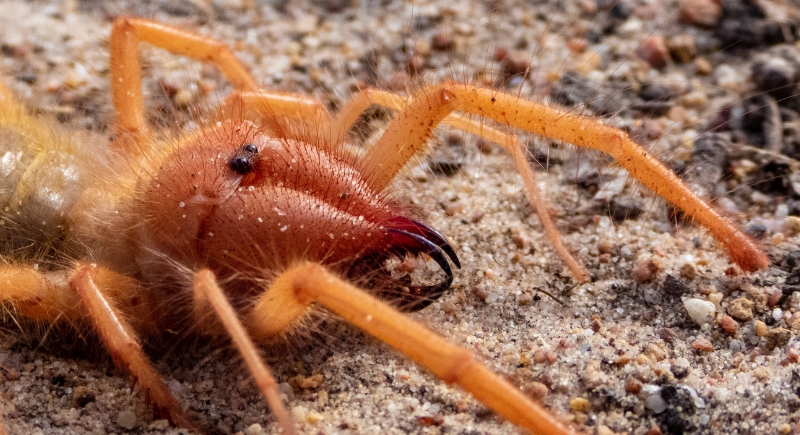This Creepy Crawler Looks Like a Spider, but Hunts Like a Horror Movie
Going into the wild often means crossing paths with animals you have never seen before. When we think about the desert, we often imagine coming across snakes or different kinds of scorpions at best. But what catches people off guard is neither of these. It’s the sun spider, an arachnid that isn’t a true spider at all yet looks close enough to confuse almost anyone. With its speed, size, and unsettling jaws, it becomes one of the most surprising encounters the desert has to offer.
What Exactly Is a Sun Spider?

Image via Getty Images/Willem Van Zyl
Sun spiders go by many names, like camel spiders and wind scorpions. However, they’re neither spiders nor scorpions. They belong to their own group of arachnids with more than 1,200 known species. You can find them in deserts and arid regions across Africa, the Middle East, southern Europe, Asia, and the southwestern United States.
Their name comes from Latin roots referring to the sun (sol) and fleeing (fugere), a description based on a misunderstanding of their behavior. In reality, they can be active both during the day and night, depending on conditions, though they often shelter during extreme heat.
Sun spiders can measure anywhere from 1 to 8 inches long, with colors ranging from pale yellow to reddish brown that blend perfectly into sand. Their most noticeable feature is their massive forward-facing jaws, which make up about a third of their body. They’ve also got four pairs of walking legs and two leg-like pedipalps, which are used to sense, grab, and even dig into the ground.
Built for Harsh Conditions
Life in the desert is extreme, but sun spiders have a toolkit that makes survival possible. Burrows are their main line of defense, which offer shade during the day and protection from predators. These underground spaces also double as molting chambers, where they safely shed their old exoskeleton, and as nurseries. A female can lay between 50 and 100 eggs in a single clutch, leaving them in the shelter of a burrow until they hatch.
Their sense of touch and ability to detect vibrations guide them through the dark, while their strong legs make them capable diggers and fast runners. Unlike true spiders, they don’t spin silk, so these burrows are the only homes they ever build.
Hunting Like a Monster
A hunt begins with speed. The sun spider darts across the ground and closes the gap before its target can get away. Its front limbs grab hold, giving the jaws a chance to work. Those jaws do not crush all at once but shear back and forth, cutting a beetle or scorpion into smaller pieces. Even other sun spiders can fall victim. Once the body is broken apart, enzymes are applied to soften what remains, and the liquid is drawn in.
It is a harsh process, but an effective one in dry places where food is never guaranteed. To people, the display looks frightening, yet the danger is minimal. Sun spiders have no venom, and while a bite can sting, it rarely pierces the skin. Wildlife handlers often show this by allowing large specimens to walk across their hands without injury.
A Surprising Pop Culture Hero
These desert predators even have a spot in the Marvel Universe. In the Spider-Verse, Charlotte Webber, better known as Sun-Spider, is an LGBTQ+ superhero with Ehlers-Danlos syndrome who swings into action with the likes of Miles Morales and Gwen Stacy. Unlike real sun spiders, she spins webs, but the inspiration shows how even the creepiest creatures can spark unexpected stories.
Creepy but Essential
The appearance of a sun spider unsettles many people, yet its place in the desert is important. Feeding on insects and other small animals helps keep populations in balance. At the same time, it becomes prey itself for birds, reptiles, and mammals that rely on it as part of their diet. An encounter at night might feel unsettling, but this animal is less a menace than a working piece of the ecosystem, adapted to survive in a demanding landscape.